7 Great Code Documentation Examples for Developers in 2025
Explore 7 real-world code documentation examples. Learn best practices and see how to streamline documentation with actionable insights for better code quality.
Great code is only half the battle; great documentation is what makes it usable, maintainable, and scalable. Without clear guidance, even the most elegant software becomes a black box, creating friction for new developers, hindering collaboration, and increasing long-term maintenance costs. Effective documentation is not just a "nice-to-have" but a critical asset that directly impacts project velocity and success. Understanding the principles behind excellent documentation is the first step, and for a deeper dive, exploring guides on how to write software documentation effectively can provide a solid foundation.
This article moves from theory to practice. We will dissect seven real-world code documentation examples, showcasing what makes them successful. From the in-line clarity of JSDoc to the comprehensive API specifications of Swagger, you will see tangible strategies in action. For each example, we'll provide a strategic breakdown, highlighting replicable tactics you can immediately apply to your own projects. You'll learn not just what makes these examples great, but how to achieve similar results efficiently. We will also demonstrate how tools like Zemith’s Coding Assistant can automate and streamline the creation of high-quality documentation, saving you valuable time and effort.
1. JSDoc
JSDoc is a powerful markup language used to annotate JavaScript source code files. By embedding specially formatted block comments directly above your code, you can describe functions, classes, parameters, and return values. This structured approach is a cornerstone of many high-quality code documentation examples because it allows tools to automatically parse these comments and generate professional, easy-to-navigate HTML documentation.
This "documentation-as-code" methodology is heavily favored by projects like Node.js and frameworks like React. It keeps documentation tightly coupled with the source code, ensuring that as the code evolves, the documentation can be updated in the same commit, reducing the risk of it becoming outdated.
Strategic Analysis and Actionable Insights
JSDoc’s primary strength lies in its comprehensive tag system. Tags like @param, @returns, and @throws provide a standardized vocabulary for describing the API contract of a function. This explicitness eliminates ambiguity for other developers consuming your code.
Key Strategy: Treat JSDoc annotations not just as comments, but as an integral part of your API's design. Use them to enforce type safety and clarify intent, which significantly improves code maintainability and collaboration.
To better understand JSDoc's core benefits, the following summary box highlights its most impactful features.
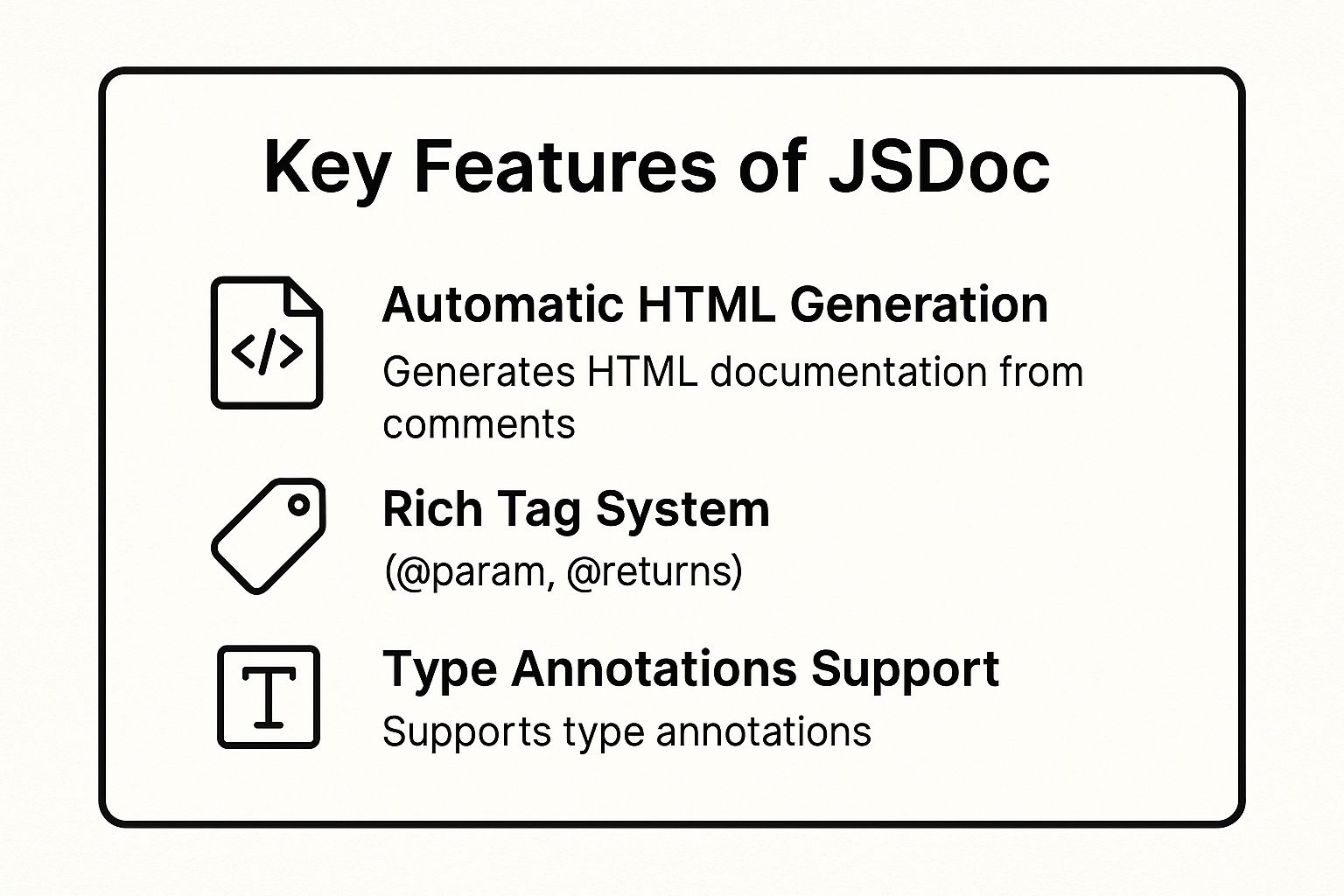
These features demonstrate how JSDoc transforms simple comments into a robust, interactive documentation system. The ability to define types also enhances developer experience by powering IntelliSense and autocomplete in modern code editors.
How to Implement This Strategy
- Standardize Tag Usage: Enforce a consistent style for JSDoc tags across your team. Linters like ESLint with
eslint-plugin-jsdoccan automate this, ensuring uniformity. - Provide Concrete Examples: Use the
@exampletag to include a code snippet demonstrating how to use the function. This is often more valuable than a lengthy description. - Automate Generation: Integrate a JSDoc generator into your CI/CD pipeline. This ensures your public-facing documentation is always synchronized with your main branch.
Writing detailed JSDoc can feel time-consuming, but this is a perfect opportunity for AI-driven efficiency. An actionable insight is to use an AI tool like Zemith’s Coding Assistant to automatically generate JSDoc blocks for existing functions, helping you document your code faster and more consistently.
2. Sphinx with reStructuredText
Sphinx is a powerful documentation generator that has become the de facto standard for the Python ecosystem. Originally created for the official Python documentation, it uses reStructuredText (RST) as its markup language. This combination allows developers to create beautiful, comprehensive, and interconnected documentation that can be rendered in multiple formats, including HTML, PDF, and ePub.

Its status as a premier tool for code documentation examples comes from its ability to integrate tightly with source code. Projects like Django, NumPy, and Pandas rely on Sphinx to generate world-class documentation. This system excels at creating not just API references but also extensive tutorials, guides, and narrative-style content, all from plain text files stored alongside the code.
Strategic Analysis and Actionable Insights
Sphinx's core strength is its extensibility and the power of its cross-referencing capabilities. Using RST directives, you can seamlessly link between different functions, classes, and even separate documents. This creates a highly navigable and cohesive knowledge base, which is critical for complex projects where understanding the interplay between components is essential.
Key Strategy: Leverage Sphinx's
autodocextension to automatically pull documentation from Python docstrings. This "single source of truth" approach ensures that your API reference is always synchronized with your code, eliminating documentation drift and enhancing maintainability.
The combination of autodoc with semantic cross-referencing turns your documentation into an interactive exploration tool. It moves beyond static descriptions and empowers developers to navigate the codebase's logic directly from the documentation itself.
How to Implement This Strategy
- Master Cross-Referencing: Use RST roles like
:py:func:and:py:class:to link to specific code objects. This creates clickable links in the generated HTML, making your documentation vastly more useful. - Organize with Directives: Structure your content using directives like
.. toctree::to create tables of contents and.. note::or.. warning::to draw attention to important information. - Automate API Docs: Configure the
autodocextension to scan your source code directories. By simply adding an.. automodule:: my_moduledirective, Sphinx will generate a full API reference from your docstrings.
To streamline the meticulous task of writing detailed docstrings, a key actionable insight is to integrate an AI assistant. Tools like Zemith’s Coding Assistant can generate properly formatted Python docstrings for your functions and classes, ensuring they are instantly ready for Sphinx to process and helping you build your documentation more efficiently.
3. GitHub README
A GitHub README file is the front door to a software project. Written in Markdown, it serves as the initial, high-level overview for anyone landing on the repository. This is often the first and only piece of documentation a potential user or contributor will read, making it one of the most critical code documentation examples for establishing project credibility and usability.
Projects like React, Vue.js, and TensorFlow leverage their READMEs to provide a polished, professional introduction. A well-crafted README guides users from discovery to installation and first use, setting the tone for the entire project and community. To gain deeper insights into the platform's vision and its impact on developer workflows, including how READMEs are viewed and utilized, you might find valuable perspective from a conversation offering insights from GitHub's CEO.

Strategic Analysis and Actionable Insights
The primary strength of a README is its accessibility and universal format. Markdown is simple to write and renders cleanly on GitHub, allowing for rich content like images, links, and code blocks without a complex setup. It democratizes documentation, empowering every developer to contribute to the project's front page.
Key Strategy: Treat your README as a strategic marketing document for your code. It should not only explain what the project does but also why someone should use it and how they can get involved. Clarity and a strong first impression are paramount.
The goal is to answer a visitor's key questions immediately. A great README minimizes friction and builds trust by showing that the project is active, well-maintained, and easy to engage with. It also acts as a central hub, linking out to more detailed documentation, contribution guides, and community channels.
How to Implement This Strategy
- Structure for Scannability: Use clear, semantic headings like
Installation,Usage, andContributing. Add a Table of Contents for longer READMEs to improve navigation. - Use Visuals and Badges: Include status badges (e.g., build passing, code coverage) at the top to convey project health at a glance. Use GIFs or screenshots to demonstrate the project in action.
- Provide a "Quick Start" Guide: Give users a clear, copy-pasteable set of commands to get the project running locally. This immediately lowers the barrier to entry.
A valuable actionable insight for creating and maintaining a comprehensive README is to use an AI assistant. Zemith’s Coding Assistant can generate boilerplate sections like installation instructions or contribution guidelines based on your project's structure. This lets you quickly establish a professional README and promote best practices, such as linking to a comprehensive code review checklist.
4. Doxygen
Doxygen is a highly versatile documentation generator, renowned as the de facto standard for C++ but also supporting languages like C, Objective-C, Java, and Python. It functions by parsing source code to extract specially formatted comment blocks, then compiling them into comprehensive documentation in various formats, including HTML, LaTeX, and man pages. These outputs are not just text; Doxygen excels at generating dependency graphs, inheritance diagrams, and call graphs, making it one of the most powerful code documentation examples for understanding complex, object-oriented systems.
This "code-first" approach is essential for large-scale projects where architecture and class relationships are critical. Prominent examples like the Qt framework, OpenCV, and the Boost C++ Libraries rely on Doxygen to create navigable and visually rich reference manuals. It allows developers to maintain documentation directly alongside the code, ensuring accuracy and consistency as the software evolves.
Strategic Analysis and Actionable Insights
Doxygen's core strength is its ability to visualize code structure automatically. By using commands like @class, @ingroup, and @see, you can create logical groupings and cross-references that Doxygen transforms into interactive diagrams and hyperlinked pages. This visual context is invaluable for onboarding new developers to a legacy C++ codebase or a complex framework.
Key Strategy: Leverage Doxygen's graphing capabilities to document more than just individual functions. Use it to map out your entire software architecture, showing how modules, classes, and files interconnect. This architectural overview is often more critical than line-by-line comments.
To grasp Doxygen's primary benefits, the following summary highlights its most impactful features. The ability to automatically generate diagrams from source code comments is a standout feature that significantly reduces manual effort in creating and maintaining architectural documentation. This visual approach also complements robust testing strategies by clarifying dependencies, an area you can explore further with these software testing best practices.
These features make Doxygen an indispensable tool for projects demanding detailed technical and architectural documentation. Its power lies in converting structured comments into a deeply interconnected and searchable knowledge base.
How to Implement This Strategy
- Master the Doxyfile: The
Doxyfileis Doxygen's configuration hub. Invest time in customizing it to control output styles, enable graph generation (requires the Graphviz tool), and define project-specific settings. - Use Concise Summaries: Start every documentation block with the
\briefor@briefcommand for a short, one-line summary. Doxygen uses this for lists and quick-reference tables, making your documentation far more scannable. - Embed Code Examples: Use the
\codeand\endcodecommands to embed compilable code snippets directly within your documentation. This provides clear, practical examples of how to use your API.
The actionable insight here is to offload the repetitive work of writing Doxygen comments. An AI tool like Zemith’s Coding Assistant can automatically generate Doxygen-formatted comment blocks for your C++ functions and classes. This ensures your documentation is syntactically correct and complete with minimal manual effort, freeing up developers to focus on architectural decisions.
5. Swagger/OpenAPI
Swagger, now known as the OpenAPI Specification, provides a language-agnostic interface for describing RESTful APIs. This specification allows both humans and computers to discover and understand the capabilities of a service without access to source code or documentation. When properly defined, a consumer can understand and interact with the remote service with minimal implementation logic, making it one of the most effective code documentation examples for API-first development.
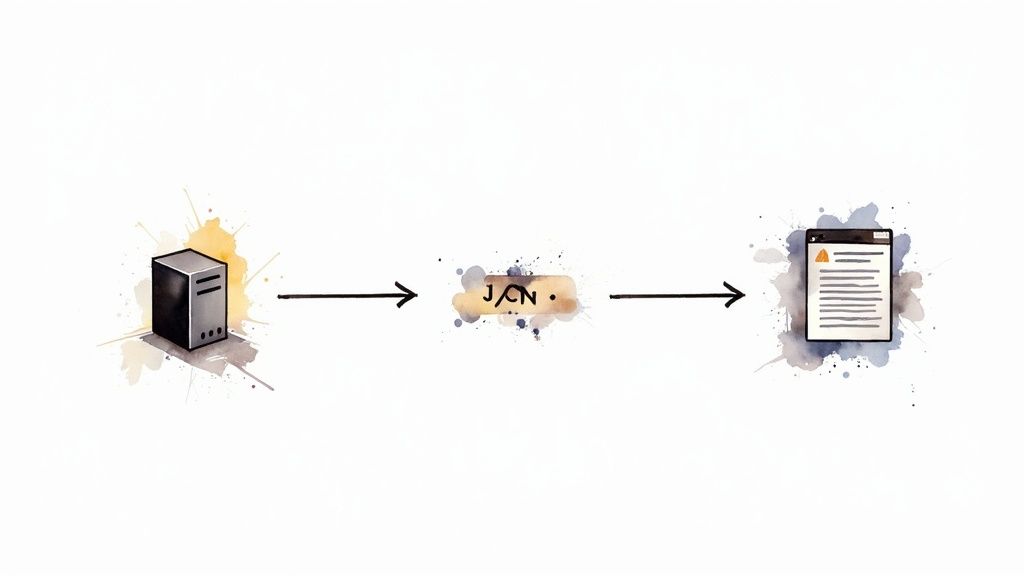
This standard is championed by industry leaders like Stripe and GitHub for their public APIs. It powers interactive documentation where developers can read about an endpoint and immediately make live API calls from their browser. This hands-on approach drastically reduces the time it takes for a new developer to understand and integrate with an API.
Strategic Analysis and Actionable Insights
The core strength of OpenAPI is its machine-readability. The specification, typically a YAML or JSON file, serves as a single source of truth for your API's design. This file can be used to automatically generate interactive documentation, client SDKs in various languages, and even server-side boilerplate code.
Key Strategy: Leverage the OpenAPI specification as the central contract for your API development lifecycle. Use it to drive design discussions, generate mock servers for frontend teams, and automate conformance testing, ensuring the implementation never drifts from the documented standard.
To better understand the OpenAPI ecosystem's core benefits, the following video provides a helpful overview of its purpose and power.
This comprehensive approach ensures that documentation, testing, and implementation are always perfectly aligned, which is critical for maintaining reliable and easy-to-use APIs.
How to Implement This Strategy
- Use Code Annotations: Instead of manually maintaining a large YAML file, use annotations directly in your server-side code (e.g., using libraries like
swagger-jsdocfor Node.js orSwashbucklefor .NET). This keeps the documentation in sync with the actual business logic. - Provide Rich Examples: For each endpoint, include detailed request and response examples. This helps developers understand the expected data structures and status codes without having to guess.
- Automate Everything: Integrate spec generation and documentation publishing into your CI/CD pipeline. This guarantees that your public documentation always reflects the latest deployed version of your API.
An actionable insight for teams using OpenAPI is to automate the bridge between design and implementation. Zemith’s Coding Assistant can help generate server-side code stubs and annotations directly from a design-first OpenAPI specification, empowering you to implement and document your API endpoints faster and with greater accuracy.
6. Rustdoc
Rustdoc is the official documentation generator built directly into the Rust compiler and toolchain. By parsing specially formatted comments (typically using /// for items or //! for modules), it generates professional HTML documentation. This tight integration makes it one of the most powerful and seamless code documentation examples, as it's a first-class citizen in the Rust ecosystem, used extensively by projects like the Rust standard library, Tokio, and Serde.
This "docs-as-code" approach is fundamental to the Rust community's culture of quality and reliability. It ensures that documentation lives next to the code it describes, making it easy to keep synchronized. Furthermore, Rustdoc's ability to compile and test code examples directly within the documentation guarantees that examples are always correct and functional, a feature that dramatically elevates documentation quality.
Strategic Analysis and Actionable Insights
Rustdoc’s standout feature is its built-in test runner for documentation examples. This unique capability transforms examples from static illustrations into verifiable, working code. It provides an unparalleled level of confidence for both the author and the consumer that the documented usage is accurate. This is crucial for complex libraries where incorrect examples can lead to significant user frustration.
Key Strategy: Leverage Rustdoc's built-in testing to create a "living" API specification. Treat your code examples as miniature integration tests that validate the public-facing contract of your library, ensuring documentation is never misleading or out-of-date.
To better understand Rustdoc's core benefits, the following summary box highlights its most impactful features.
These features demonstrate how Rustdoc fosters a culture of robust, reliable documentation. The automatic linking and Markdown support make the docs easy to write and navigate, while the testing feature ensures they remain trustworthy over time.
How to Implement This Strategy
- Make Examples Runnable: Always write code snippets within documentation blocks as complete, runnable examples. Use the
#prefix to hide setup code from the final output while still ensuring the example compiles and runs correctly duringcargo test. - Use Intra-Doc Links: Improve navigability by using Rustdoc's automatic linking syntax (e.g.,
[my_function]or[MyStruct`]) to create hyperlinks to other parts of your API documentation. This builds a cohesive and interconnected documentation suite. - Leverage
#[doc]Attributes: For more complex or module-level documentation, use the#[doc = "..."]attribute directly on the item. This is particularly useful for including longer explanations or embedding external Markdown files.
A key actionable insight is to accelerate the creation of these detailed comments. Zemith’s Coding Assistant can generate the initial /// comment blocks for your Rust functions and structs. This provides a solid template that you can then enhance with runnable examples, helping you document your code faster and more consistently.
7. Javadoc
Javadoc is the original documentation generator for the Java language and remains the gold standard within its ecosystem. It works by parsing specially formatted comment blocks, known as "doc comments," embedded directly in Java source code. This process produces a comprehensive and cross-linked set of HTML pages that describe the public API, a format that has become one of the most recognizable code documentation examples in software development.
Pioneered by Sun Microsystems, this approach ensures documentation lives alongside the code it describes. This co-location is critical for large-scale projects like the core Java SE platform and the Spring Framework. By making documentation an integral part of the development workflow, Javadoc minimizes the risk of documentation drift and keeps the API reference consistently synchronized with the actual implementation.
Strategic Analysis and Actionable Insights
Javadoc's enduring strength is its deep integration with the Java development environment. IDEs like IntelliJ IDEA and Eclipse leverage Javadoc comments to provide rich, contextual information directly to developers as they write code. Tags like @param, @return, and @throws form the basis of a formal API contract, making code easier to understand and use correctly.
Key Strategy: Leverage Javadoc not merely for post-development documentation, but as a live design tool. Writing clear doc comments before or during implementation clarifies method contracts, exposes design flaws early, and improves overall code quality.
The tool’s ability to generate a navigable, professional website from source code is its most significant benefit, turning comments into a valuable asset for any developer consuming the API.
How to Implement This Strategy
- Be Explicit with Tags: Consistently use
@paramfor every parameter,@returnfor non-void methods, and@throwsfor all declared checked exceptions. This explicitness is key to creating useful documentation. - Cross-Reference Liberally: Use the
{@link}tag to create hyperlinks to other classes or methods within your documentation. This builds a web of knowledge that helps users navigate complex codebases. - Add Versioning Context: Employ the
@sincetag to indicate when a feature, class, or method was introduced. This is invaluable for users who need to maintain compatibility across different versions of your library.
Here's an actionable insight to overcome the repetitiveness of Javadoc: use AI to automate the boilerplate. Zemith’s Coding Assistant can be prompted to generate complete Javadoc blocks for your Java methods, instantly capturing all necessary tags and maintaining a consistent style. This lets developers focus on the substance of the documentation rather than the syntax.
Code Documentation Tools Comparison
| Documentation Tool | Implementation Complexity 🔄 | Resource Requirements ⚡ | Expected Outcomes 📊 | Ideal Use Cases 💡 | Key Advantages ⭐ |
|---|---|---|---|---|---|
| JSDoc | Moderate - requires consistent tagging and discipline | Low to moderate - IDE integration helps | Rich HTML docs with type info and cross-references | JavaScript/TypeScript projects needing standardized API docs | Widely adopted, automatic generation, strong IDE support |
| Sphinx with reStructuredText | High - steep learning curve for reST and setup | Moderate to high - customization and extensions | Professional multi-format docs with strong cross-referencing | Python projects or multi-language docs needing extensibility | Powerful, flexible, extensive extensions, beautiful themes |
| GitHub README | Low - simple Markdown syntax | Low - single Markdown file | Basic project overview with badges and syntax highlighting | Open source repositories needing quick, accessible info | Highly visible, easy to write, community standard |
| Doxygen | High - complex configuration and syntax | Moderate to high - needs setup for diagrams | Comprehensive reference docs with diagrams and code graphs | C++ and multi-language projects needing detailed API docs | Visual diagrams, multi-language, mature and stable |
| Swagger/OpenAPI | Moderate - requires spec maintenance | Moderate - synchronization with API needed | Interactive API docs with client SDK generation | REST API projects requiring interactive, standardized docs | Industry standard, interactive testing, excellent tooling |
| Rustdoc | Low - zero config, built-in tool | Low - integrated with Rust toolchain | Fast, searchable HTML docs with tested examples | Rust projects needing tight integration and example testing | Zero config, doc testing, fast, consistent output |
| Javadoc | Moderate - requires consistent use of tags | Low to moderate - built-in JDK tool | Standardized HTML API documentation | Java projects requiring official, consistent API docs | Industry standard, excellent IDE support, integrated tooling |
From Examples to Execution: Your Documentation Action Plan
We've journeyed through a diverse landscape of powerful code documentation examples, from the structured precision of Javadoc and Doxygen to the API-centric clarity of Swagger/OpenAPI and the elegant, auto-generated power of Rustdoc. Each example, whether it was a meticulously crafted GitHub README or a comprehensive Sphinx-generated site, offers more than just a template; it provides a strategic blueprint for communication. The common thread weaving through all these great examples is a commitment to the end-user, whether that user is a fellow developer, an API consumer, or a future version of yourself.
Effective documentation isn't a single, monolithic task. It is a mosaic of thoughtful practices applied consistently. The examples from JSDoc and Javadoc highlighted the immense value of in-code comments that live alongside the logic they describe, making maintenance intuitive. Sphinx and Doxygen showed us how to build expansive, searchable knowledge bases from those very comments. Finally, the GitHub README demonstrated the critical importance of a project's "front door," providing essential context and a clear starting point for anyone new to the repository.
Your Path Forward: From Inspiration to Implementation
Seeing strong code documentation examples is the first step; turning that inspiration into a consistent practice is the goal. Your action plan should focus on integrating documentation into your workflow, not treating it as an afterthought. Start small by adopting a clear standard for one aspect of your work.
Here are your actionable next steps:
- Standardize Your Inline Comments: Choose a format like JSDoc or Javadoc and stick to it. Mandate that every new function or class includes a basic block explaining its purpose, parameters, and return value. This is the foundational layer upon which all other documentation is built.
- Automate Your "First Draft": For every new project, immediately generate a basic documentation site using a tool like Doxygen, Sphinx, or Rustdoc. Even if it's sparse initially, this creates the structure and expectation that documentation is a living part of the project.
- Craft a "Quick Start" README: Re-evaluate your project's README. Does it answer the five essential questions for a newcomer: What is this project? How do I install it? How do I use it? How do I contribute? Where can I get help? Make this your public-facing priority.
Mastering the art of documentation transforms you from a coder into a true engineer. It reflects a deeper understanding of your work's lifecycle and its impact on others. It reduces onboarding time, minimizes support requests, and accelerates collaboration, ultimately creating a more resilient and efficient development ecosystem. The value isn't just in the finished document; it's in the clarity of thought required to produce it. Great documentation is a direct investment in your project's future success and your team's productivity.
Ready to stop treating documentation as a chore and start making it a competitive advantage? Zemith’s AI-powered Coding Assistant integrates directly into your workflow, helping you generate clear, standardized, and comprehensive documentation based on your code and comments. Transform the high-quality code documentation examples you've seen today from inspiration into your everyday reality by visiting Zemith and discover how to automate excellence.
`Explore Zemith Features
Introducing Zemith
The best tools in one place, so you can quickly leverage the best tools for your needs.
All in One AI Platform
Go beyond AI Chat, with Search, Notes, Image Generation, and more.
Cost Savings
Access latest AI models and tools at a fraction of the cost.
Get Sh*t Done
Speed up your work with productivity, work and creative assistants.
Constant Updates
Receive constant updates with new features and improvements to enhance your experience.
Features
Selection of Leading AI Models
Access multiple advanced AI models in one place - featuring Gemini-2.5 Pro, Claude 4.5 Sonnet, GPT 5, and more to tackle any tasks
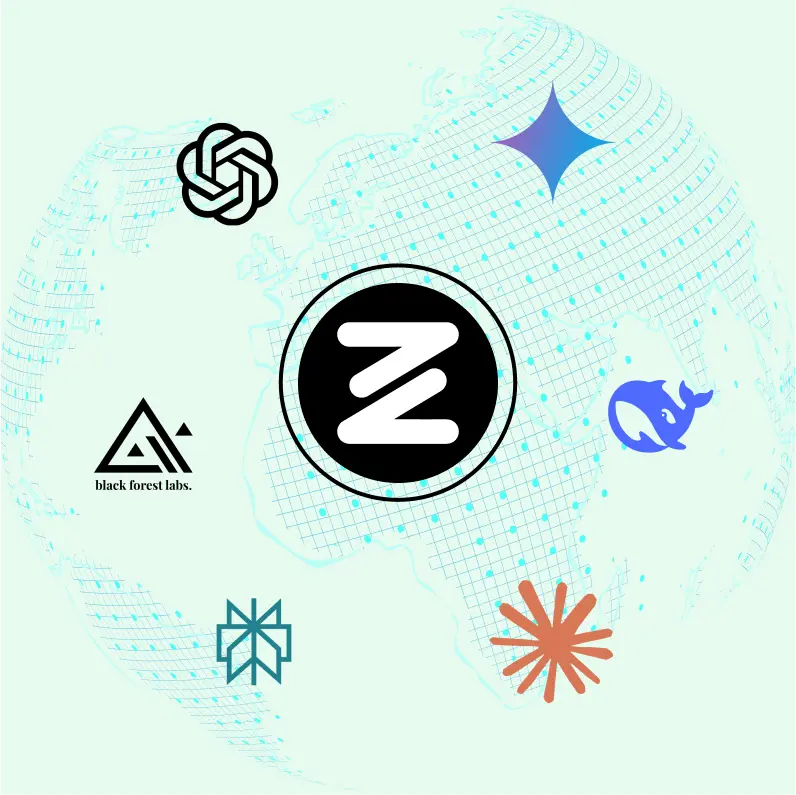
Speed run your documents
Upload documents to your Zemith library and transform them with AI-powered chat, podcast generation, summaries, and more
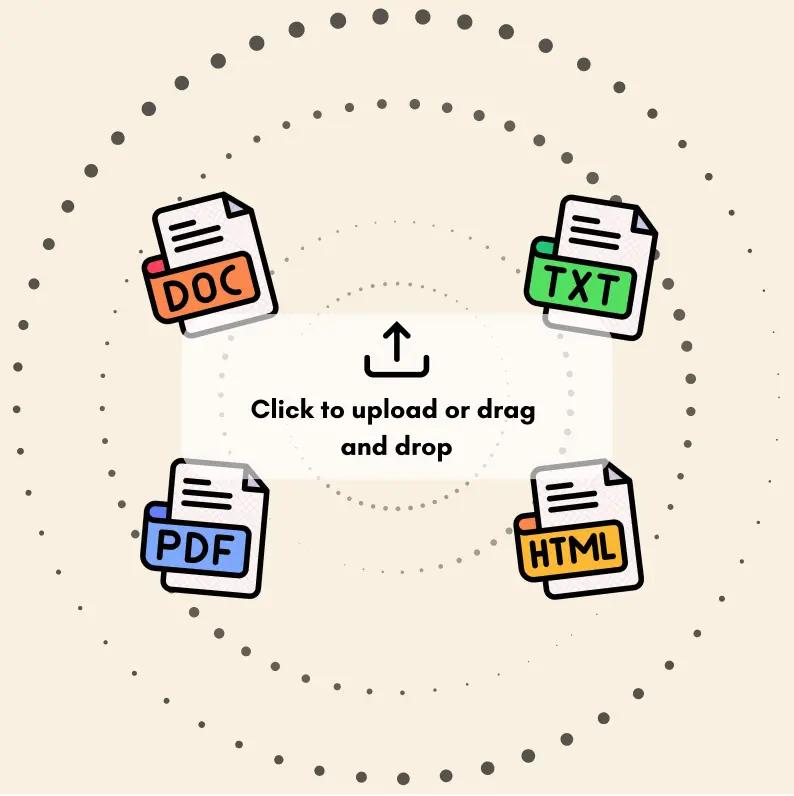
Transform Your Writing Process
Elevate your notes and documents with AI-powered assistance that helps you write faster, better, and with less effort
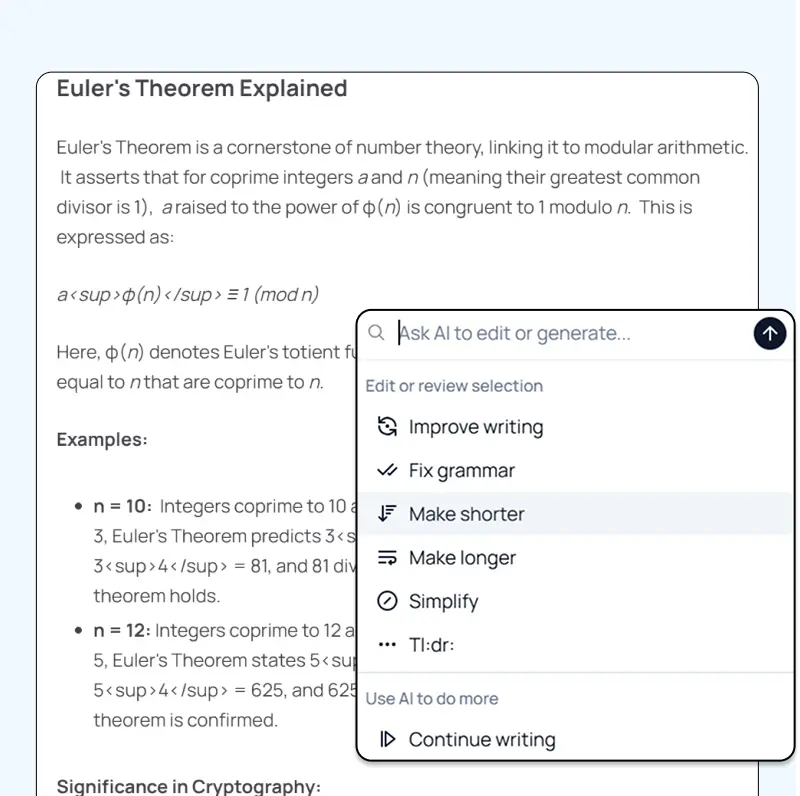
Unleash Your Visual Creativity
Transform ideas into stunning visuals with powerful AI image generation and editing tools that bring your creative vision to life
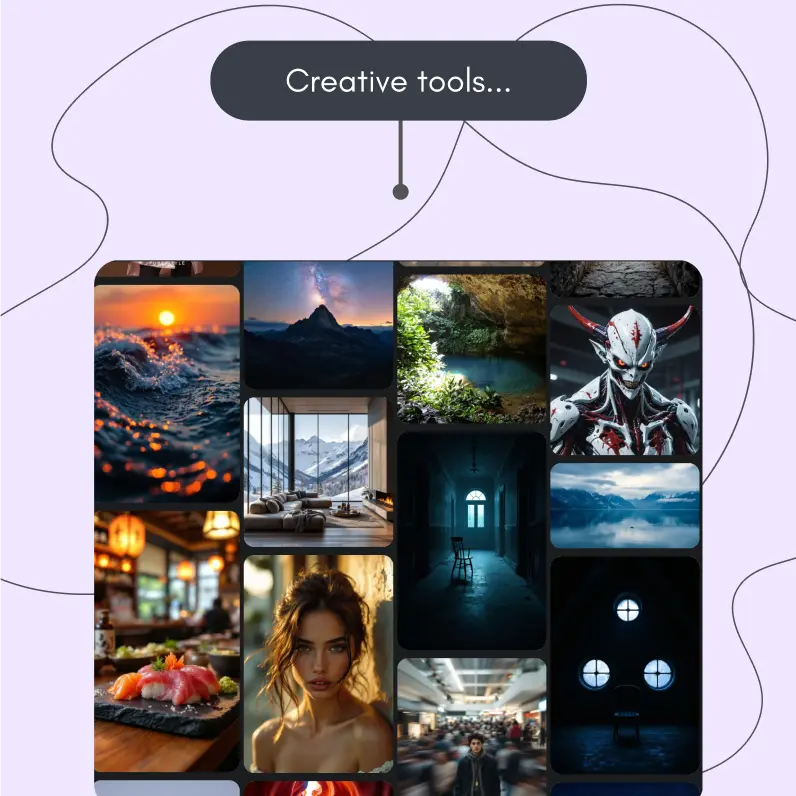
Accelerate Your Development Workflow
Boost productivity with an AI coding companion that helps you write, debug, and optimize code across multiple programming languages
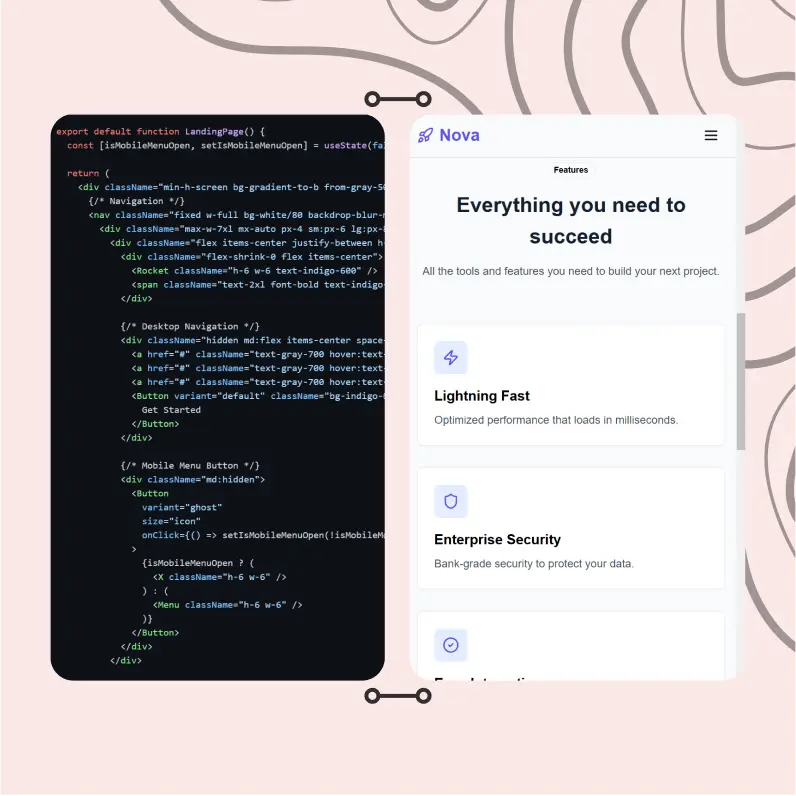
Powerful Tools for Everyday Excellence
Streamline your workflow with our collection of specialized AI tools designed to solve common challenges and boost your productivity

Live Mode for Real Time Conversations
Speak naturally, share your screen and chat in realtime with AI
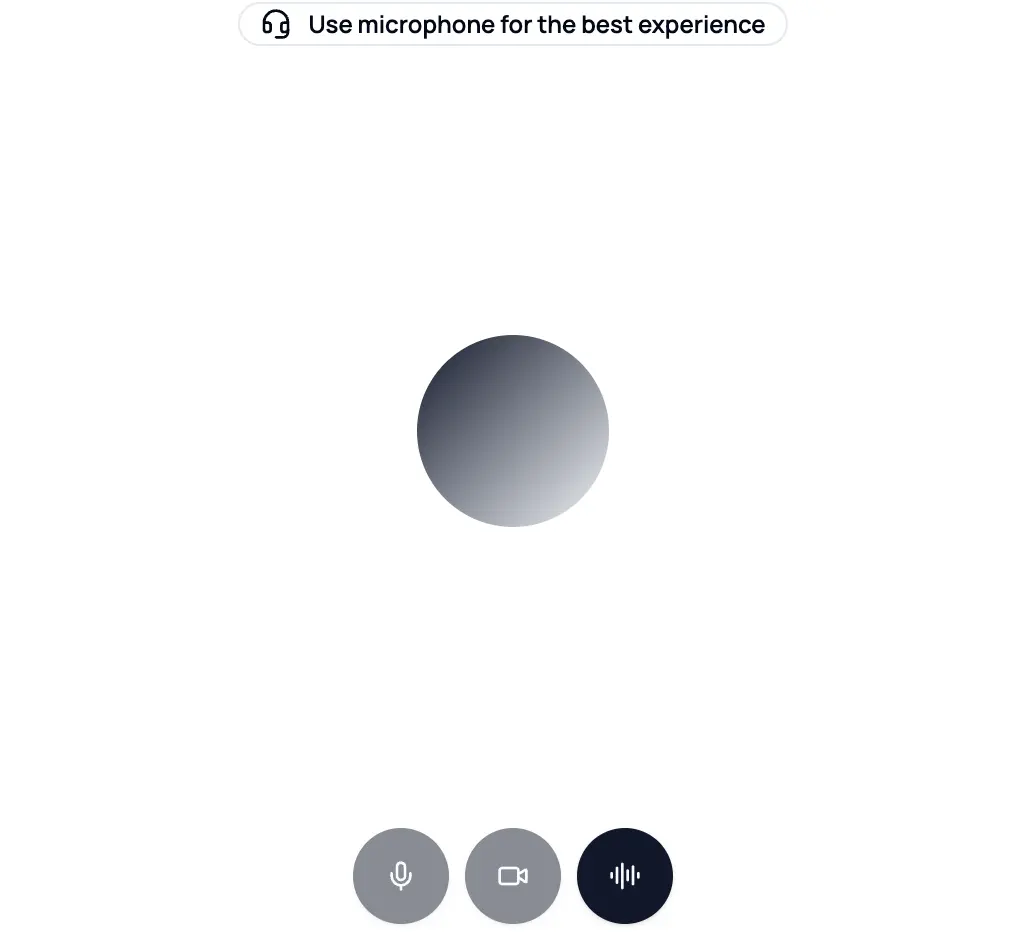
AI in your pocket
Experience the full power of Zemith AI platform wherever you go. Chat with AI, generate content, and boost your productivity from your mobile device.

Deeply Integrated with Top AI Models
Beyond basic AI chat - deeply integrated tools and productivity-focused OS for maximum efficiency
Straightforward, affordable pricing
Save hours of work and research
Affordable plan for power users
Plus
- 10000 Credits Monthly
- Access to plus features
- Access to Plus Models
- Access to tools such as web search, canvas usage, deep research tool
- Access to Creative Features
- Access to Documents Library Features
- Upload up to 50 sources per library folder
- Access to Custom System Prompt
- Access to FocusOS up to 15 tabs
- Unlimited model usage for Gemini 2.5 Flash Lite
- Set Default Model
- Access to Max Mode
- Access to Document to Podcast
- Access to Document to Quiz Generator
- Access to on demand credits
- Access to latest features
Professional
- Everything in Plus, and:
- 21000 Credits Monthly
- Access to Pro Models
- Access to Pro Features
- Access to Video Generation
- Unlimited model usage for GPT 5 Mini
- Access to code interpreter agent
- Access to auto tools
- 10000 Credits Monthly
- Access to plus features
- Access to Plus Models
- Access to tools such as web search, canvas usage, deep research tool
- Access to Creative Features
- Access to Documents Library Features
- Upload up to 50 sources per library folder
- Access to Custom System Prompt
- Access to FocusOS up to 15 tabs
- Unlimited model usage for Gemini 2.5 Flash Lite
- Set Default Model
- Access to Max Mode
- Access to Document to Podcast
- Access to Document to Quiz Generator
- Access to on demand credits
- Access to latest features
- Everything in Plus, and:
- 21000 Credits Monthly
- Access to Pro Models
- Access to Pro Features
- Access to Video Generation
- Unlimited model usage for GPT 5 Mini
- Access to code interpreter agent
- Access to auto tools
What Our Users Say
Great Tool after 2 months usage
simplyzubair
I love the way multiple tools they integrated in one platform. So far it is going in right dorection adding more tools.
Best in Kind!
barefootmedicine
This is another game-change. have used software that kind of offers similar features, but the quality of the data I'm getting back and the sheer speed of the responses is outstanding. I use this app ...
simply awesome
MarianZ
I just tried it - didnt wanna stay with it, because there is so much like that out there. But it convinced me, because: - the discord-channel is very response and fast - the number of models are quite...
A Surprisingly Comprehensive and Engaging Experience
bruno.battocletti
Zemith is not just another app; it's a surprisingly comprehensive platform that feels like a toolbox filled with unexpected delights. From the moment you launch it, you're greeted with a clean and int...
Great for Document Analysis
yerch82
Just works. Simple to use and great for working with documents and make summaries. Money well spend in my opinion.
Great AI site with lots of features and accessible llm's
sumore
what I find most useful in this site is the organization of the features. it's better that all the other site I have so far and even better than chatgpt themselves.
Excellent Tool
AlphaLeaf
Zemith claims to be an all-in-one platform, and after using it, I can confirm that it lives up to that claim. It not only has all the necessary functions, but the UI is also well-designed and very eas...
A well-rounded platform with solid LLMs, extra functionality
SlothMachine
Hey team Zemith! First off: I don't often write these reviews. I should do better, especially with tools that really put their heart and soul into their platform.
This is the best tool I've ever used. Updates are made almost daily, and the feedback process is very fast.
reu0691
This is the best AI tool I've used so far. Updates are made almost daily, and the feedback process is incredibly fast. Just looking at the changelogs, you can see how consistently the developers have ...
